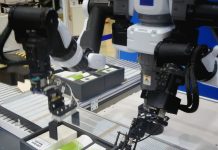The medical industry has always prided itself on being at the forefront of new technologies. In recent years we have seen significant changes in technology which has changed the way we get diagnosed and treated.
Here we take a look at some of the latest technology and the benefits they bring.
1. VR Virtual Reality
A technology we all may associate originally with video gaming has come a long way in recent years. It is so sophisticated that surgeons can now practice their surgical skills in real life situations rather than learning from a textbook. With VR it does also mean that if you make a mistake or would like to improve your skills you can replay the surgery again.
The technology also has benefits for some patients in stressful or painful situations by visualising calming landscapes which can help distract from the pain they maybe suffering. The real benefits of VR will be seen in the years to come as the technology advances further.
2. Healthcare mobile Apps
It is rare these days that when we have a medical need you can just call your local doctor and get a face to face appointment with your registered doctor. The medical profession has been stretched in recent years and mobile apps have a major part to play in how we see a healthcare professional and receive treatment.
With custom mhealth app development businesses can design services to benefit patients and doctors. For example symptom tracking, exercise and nutrition tracking and communication tools for patients and doctors.
These apps have enabled patients to have more flexibility to be able to speak to a doctor without the inconvenience it can sometimes cause in our lives and enables doctors to have a greater understanding and communication of their patients needs.
3. Nanomedicine
We are beginning to understand the true benefits of Nanomedicine and associated technology and what benefits it can bring. Many believe better diagnosis and treatment on a microscopic scale is the future.
Take Chemotherapy for example which can have a toxic effect all over the body when injected but with Nanomedicines small packages can be delivered to the cancer tumour areas only.
4. 3D Printing
A common practice in the medical industry, 3D printing has opened up the production of prosthetic limbs, hip replacements and alleviated the long production timescales in the past.
Whilst this has been a big step forward the latest development is 3D Bioprinting. Incredibly 3D bioprint can print an ink of biological material such as living cells and proteins which could be used to produce specific organs such as skin and bladders.
Printing living skin with blood vessels will help burns victims or where skin grafts are need. Organ printing will also help to reduce the amount of patients on the organ transplant list.
5. AI Artificial Technology
Potentially AI has the power to change the way we live and has many applications in medicine. One of the most exciting areas is as a virtual assistance to doctors being able to calculate the best course of medical treatment for a patient faster and more accurately than a person can.
Reducing a doctor’s workload would be one of the initial benefits of AI and it achieves this by using algorithms to mine medical record data to make diagnoses and design treatments for conditions.
Whilst AI is pioneering procedures in the medical environment it does have benefits that would be valuable in finance and energy industries.
Final thoughts
Many of these technologies were considered science fiction in the not to distant past and now they are helping save lives and treat patients all over the world. This is just a selection of what is available currently but as we see the healthcare system and it’s technologies never stand still and we wait to see the next new development.







